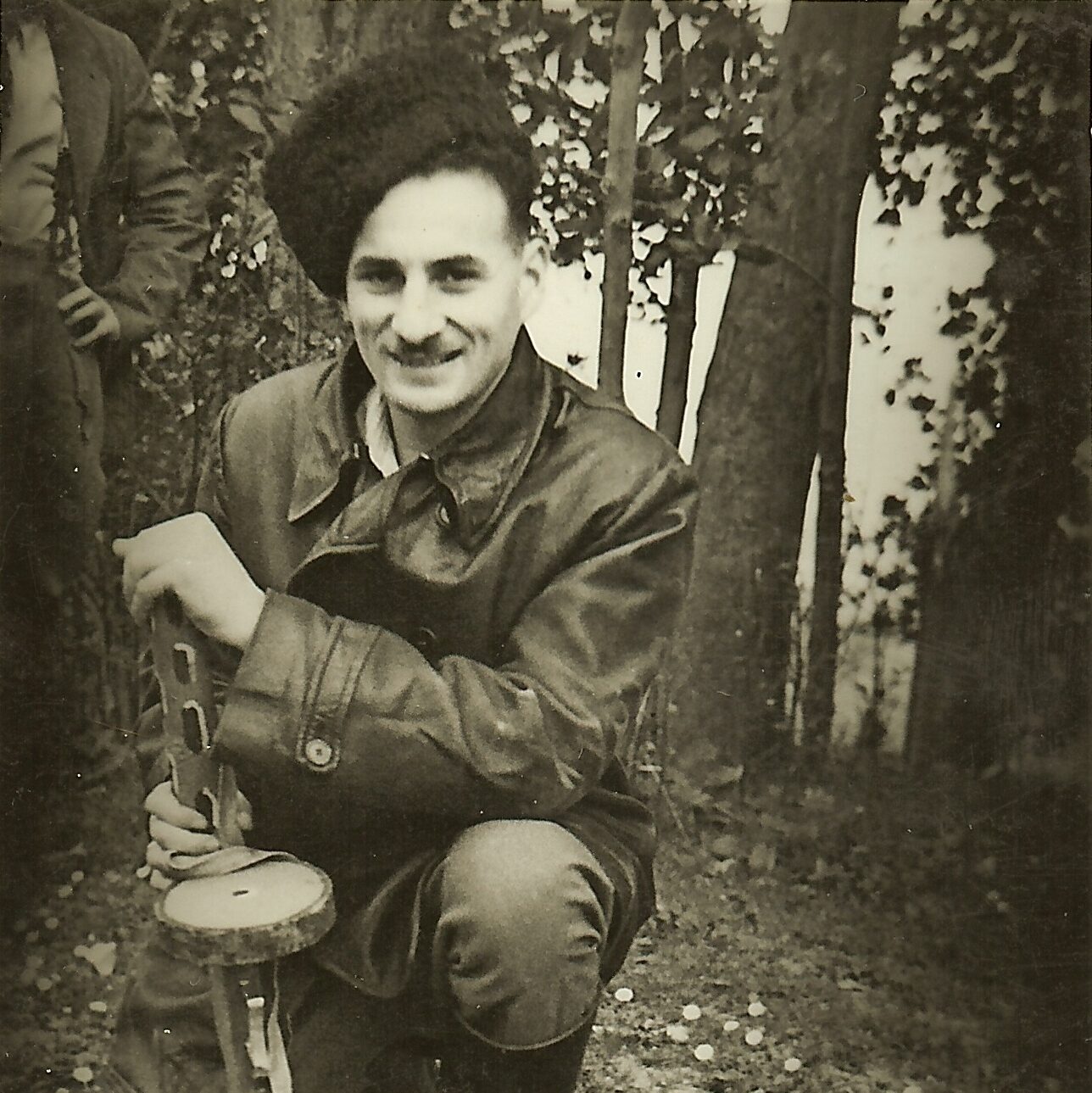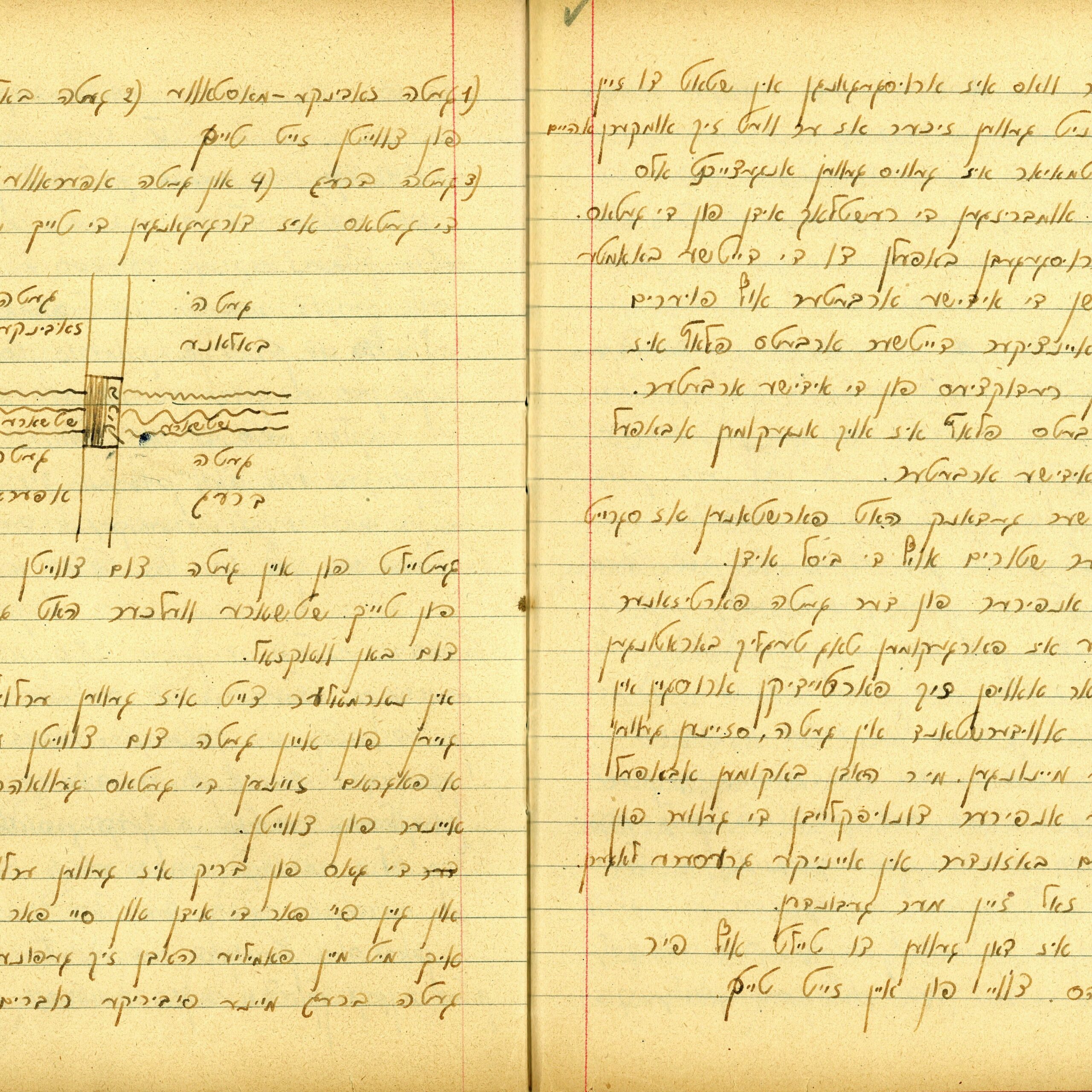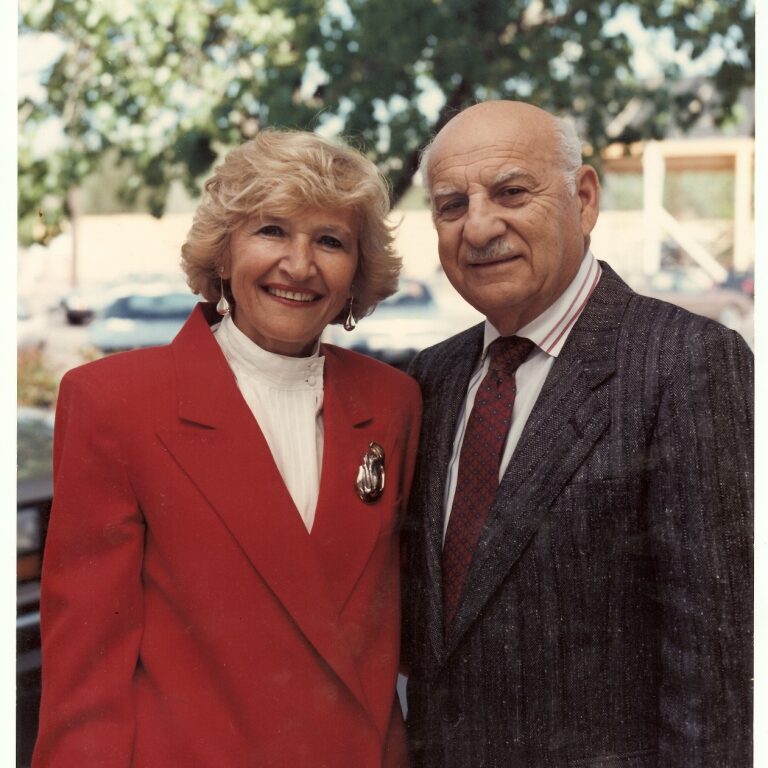Survivor Profiles: Aron Derman
We try to make as much time talking about the Holocaust. Teach what we went through. The main purpose is that it wouldn’t happen again. To remember. We hope that if people be more moral, it doesn’t happen again not only to Jews, but any people in this world.
Aron Derman
His Story:
Aron (né Dereczyński) was born in 1922 in Słonim, a vibrant Jewish town, then in Poland, today in Belarius. He had three sisters: Libi, Feigel, and Edya. At the age of ten, Aron became involved in the Zionist youth movement Hashomer Hatzair. In 1937, he applied to go to Hachshara, an agricultural school in Palestine. As he waited for his immigration certificate, the war broke out.
Under Soviet occupation, Aron went to a Russian technical school to become a movie projector. When the war between the USSR and Nazi Germany broke out in June 1941, he returned to Słonim. On the night of his return, his family home was caught in the battlefield between the Soviets and the Germans, and it was burned to the ground. Shortly after, the Germans established a ghetto. On July 17, German forces entered the ghetto and arrested 1,500 men, Aron and his father among them. While Aron narrowly escaped, his father and the rest of the men were transported to a nearby forest, where they were shot.
The death of his father deeply affected Aron, who resolved to take revenge on the perpetrators. Being young and strong, he received work at collecting Russian arms. He formed connections with others, and together they smuggled arms into the ghetto. Aron and his family survived the deportations in hiding.
In late 1941, Aron met his future wife, Lisa, in the ghetto. What began as a friendship quickly blossomed into a love story. In late June, 1941, the final liquidation of the ghetto took place. Aron watched the ghetto burn from his workplace outside the ghetto. When the action was over, Aron found Lisa and her family who were hiding in the ghetto. He had been working in clearing out valuables from the ghetto. Lisa pretended to be a male salve laborer and escaped with Aron outside. The remaining Jews of Słonim, a mere 800 people out of 20,000 who resided in the ghetto, were put to slave labor. With nowhere else to go, Lisa and Aron returned to the ghetto and joined them.
Aron decided to go to another city with his mother and sisters. He eventually arrived in Grodno, where he knew Lisa and her family were residing. He soon established contact with a Pole by the name of Tomasz Soroka, who offered to provide them with safe passage to Vilnius, free of charge. With the help of Soroka, then only twenty years old, they illegally boarded cargo trains destined for Vilnius, riding on their rooftop in the blistering cold of November. Soroka helped eight people in total to escape in this way.
Their arrival in Vilnius did not secure their safety. Based on their experience in Słonim and Grodno, they knew the danger they were in. Filled with the desire the avenge the death of their loved ones, Aron and Lisa decided to join the partisan resistance. After successfully establishing connection with the underground, they left the Vilnius ghetto as part of a group of 28 Jews. They joined other partisans in the nearby forests of Rudniknaki and Naroch, located 180 kilometers from the ghetto. There, Aron and Lisa participated in military efforts against the retreating German forces. They lost many of their friends.
In the summer of 1944, Aron and Lisa were liberated by the advancing Russian forces. They made their way to the Western Occupation Zone, and from there, to Florence. They married in 1947 in a synagogue in Rome. They then immigrated to the United States under the 1947 Refugee Act, eventually settling in Chicago. They had three sons and eight grandchildren.
In the early 1980s, Aron and Lisa joined the Illinois Holocaust Memorial Foundation (IHMF), an organization whose chief goal was to document Survivor stories, disseminate these stories to the public, and educate against racism, violence, and genocide. They were among its first members. Aron regularly shared his story and was among the first members of IHMF’s Board of Directors.
Learn More:
Life after the Holocaust: Aron and Lisa Derman Oral history interview with Aron Derman Tomasz 'Tadek' Soroka's page at the Righteous Among the Nation Database, Yad Vashem
Aron Derman during his time as a partisan circa 1944.
View this artifact >>

Aron Derman’s diary describing his wartime experiences. This expert describes the draconian measures inflicted by the new commissar to the ghetto, a German by the name of Rittmayer. Derman also relates partisans’ tough decisions in the Slonim ghetto, namely, whether or not to run to the forest or stay in the ghetto and fight there: “Among the leaders of the ghetto partisans there were daily meetings about how to protect themselves: by going out into the forest or by an uprising in the ghetto. There were various opinions. We received an order from our leader to gather the weapons from everyone individually from several of the larger camps, so that we would have a greater show of strength.”
The map depicts the four smaller parts of the Slonim ghetto, divided by a river.
View this artifact >>

Lisa and Aron Derman in Chicago, 1980s.
View this artifact >>
